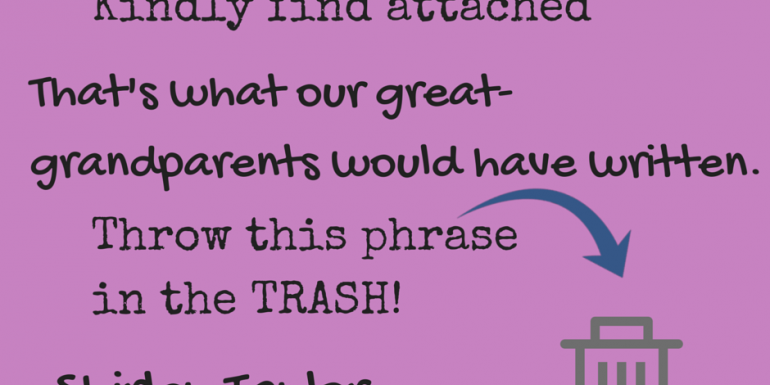Email has become an integral part of most people’s day. We use it for family and friends, co-workers, clients, and more. Email is an incredible communication tool for your business, but are you using it appropriately?
Just like you, I receive dozens of emails every day, and I see plenty of errors and bad habits. I can also tell if someone has not thought through their message, or sent it in haste. As professionals, I think it’s everyone’s responsibility to take the time to get emails right, and if you are to do this there are five habits you need to break right now. Why? Because they make you look lazy and unprofessional.
1. Stop Using Vague Or Outdated Subject Lines
‘Hi’ or ‘Enquiry’ are not good subject lines. If you’re expecting your reader to open an email, give him some idea of what it will be about. Don’t keep your reader guessing by using vague subject lines. Similarly, don’t use old subject lines. If your lunch date with a co-worker has passed, don’t keep using the same thread. Create a new email thread or simply change the subject line to something more relevant to both of you.
2. Stop Using Abbreviations Or Acronyms
Not only are they unprofessional, abbreviations and acronyms could cause confusion or misunderstanding. Not everyone thinks FYA means ‘for your action’! Take the time to consider your reader and spell out the words instead.
3. Stop Writing In One Long Paragraph
Nothing is more disheartening than opening an email only to see that it contains just one very long paragraph. It’s hard to read and makes it difficult for your reader to focus and pick out the key points. Make your message reader-friendly by leaving a blank line between paragraphs, and start a new paragraph every three to four lines.
4. Stop Sending Vague Messages
Before you even begin typing, it helps if you plan your message first – consider the flow from opening to details to action and then to close. Check through it again when you’re done and ask yourself these four quick questions:
- Have you included all the essential information?
- Can you remove any redundancies?
- Does the information flow smoothly?
- Is the action clearly stated?
5. Stop Sending Messages That Are Just Plain Sloppy
If there are no clear goals in your email, some misspelled words, long-winded sentences, and if you never bothered to double-check it before you hit send, you can bet your email might just end up in the bin.
I hope you will resolve to work on ensuring that you and your company make a great impression on email. Structure your messages logically with an introduction or some back story (Thanks for your call, etc), add the details, tell the reader what action you want, and end with an appropriate close.
The bottom line in all email communication is this: what you write and how you write it will affect what people think of you and your organisation, so it’s important to help yourself and respect your reader by using email appropriately.
If you’d like to learn more about proper business writing in emails and how to write messages that get you results, join me in my new interactive, video-based virtual training programme. I can help you and your whole team write better and more clearly so you know how to communicate with heart and build deeper relationships for better business.
Shirley is giving away a FREE Checklist ‘Top 10 Reasons Why Your Writing Style May Not Be Working and What You Can Do About It’. PLUS you will also receive a free trial comprising four modules from her unique, interactive, virtual training program ‘Business Writing That Works’. Write to her now at [email protected], and put ‘APSS Checklist and Trial’ in the subject line.



